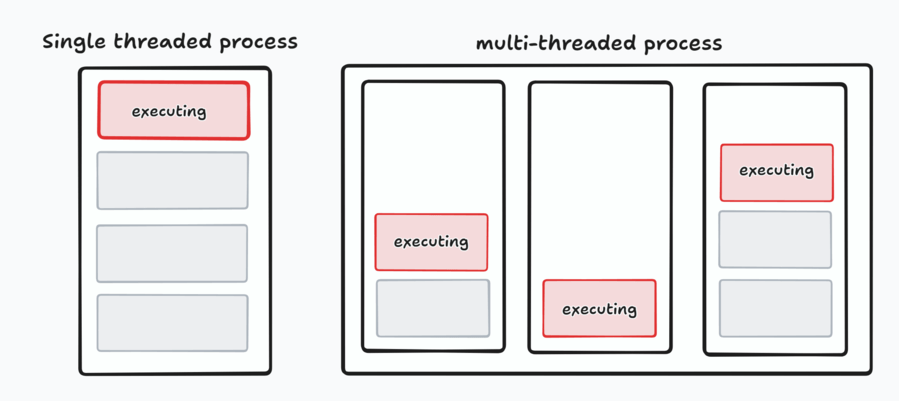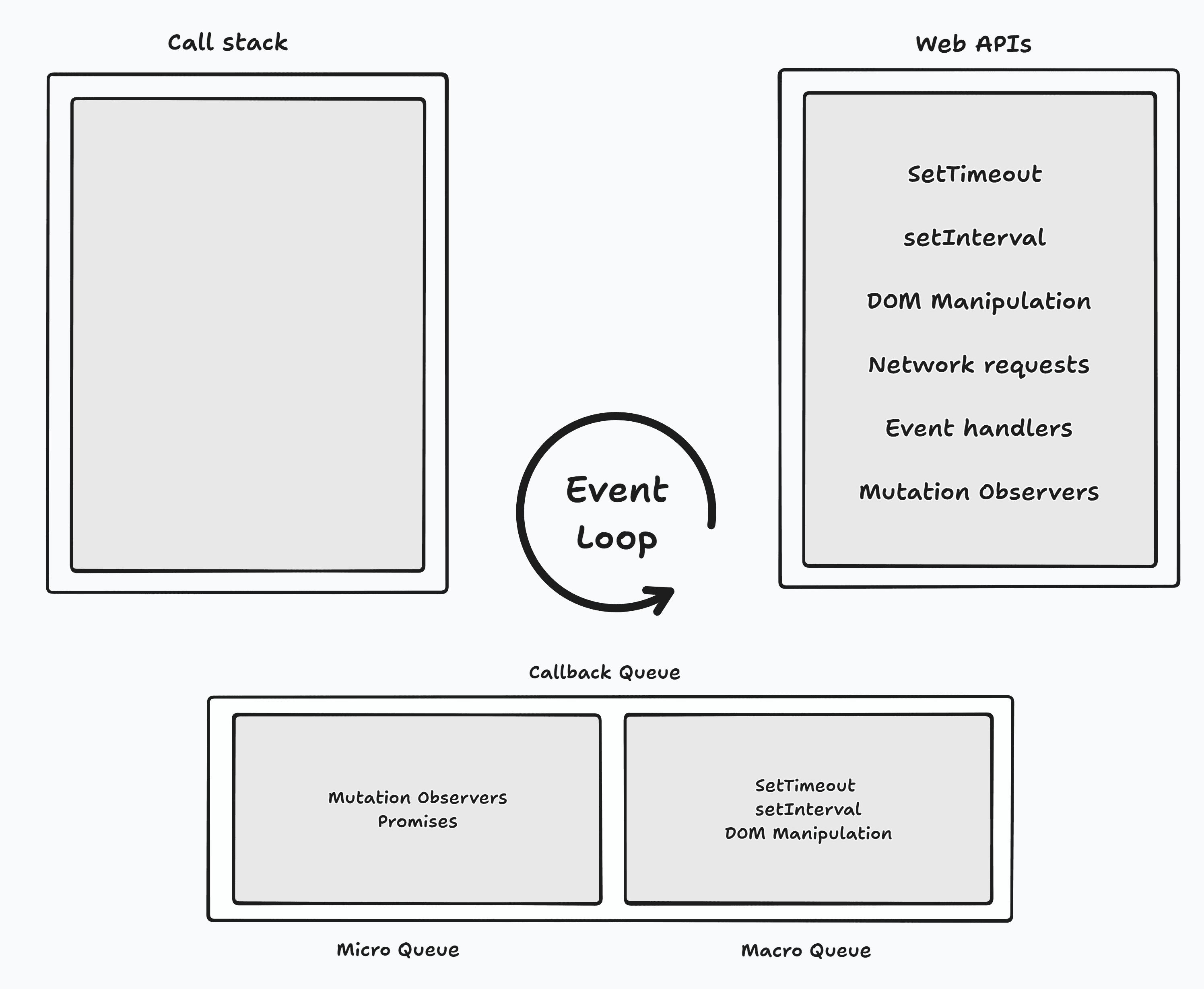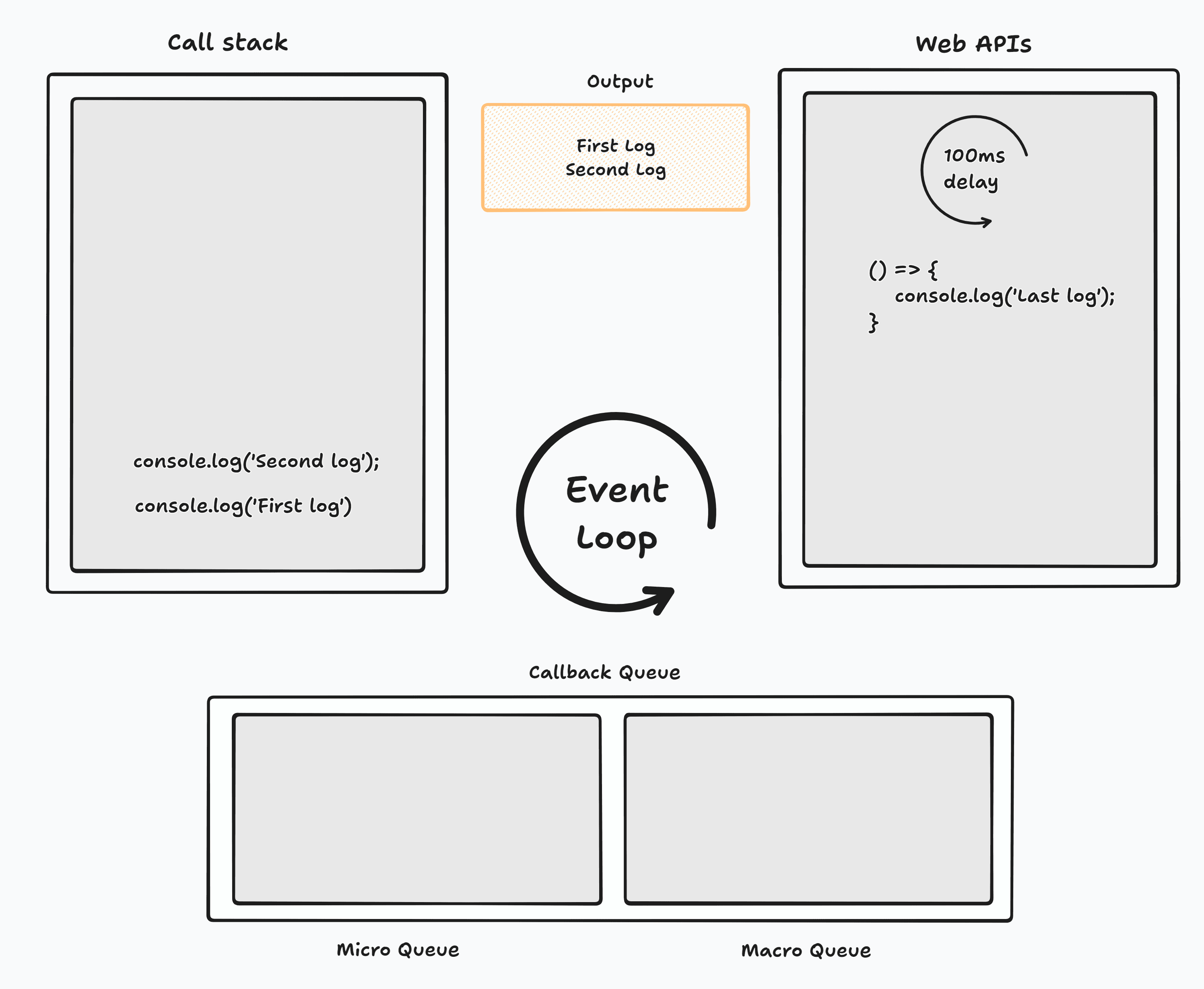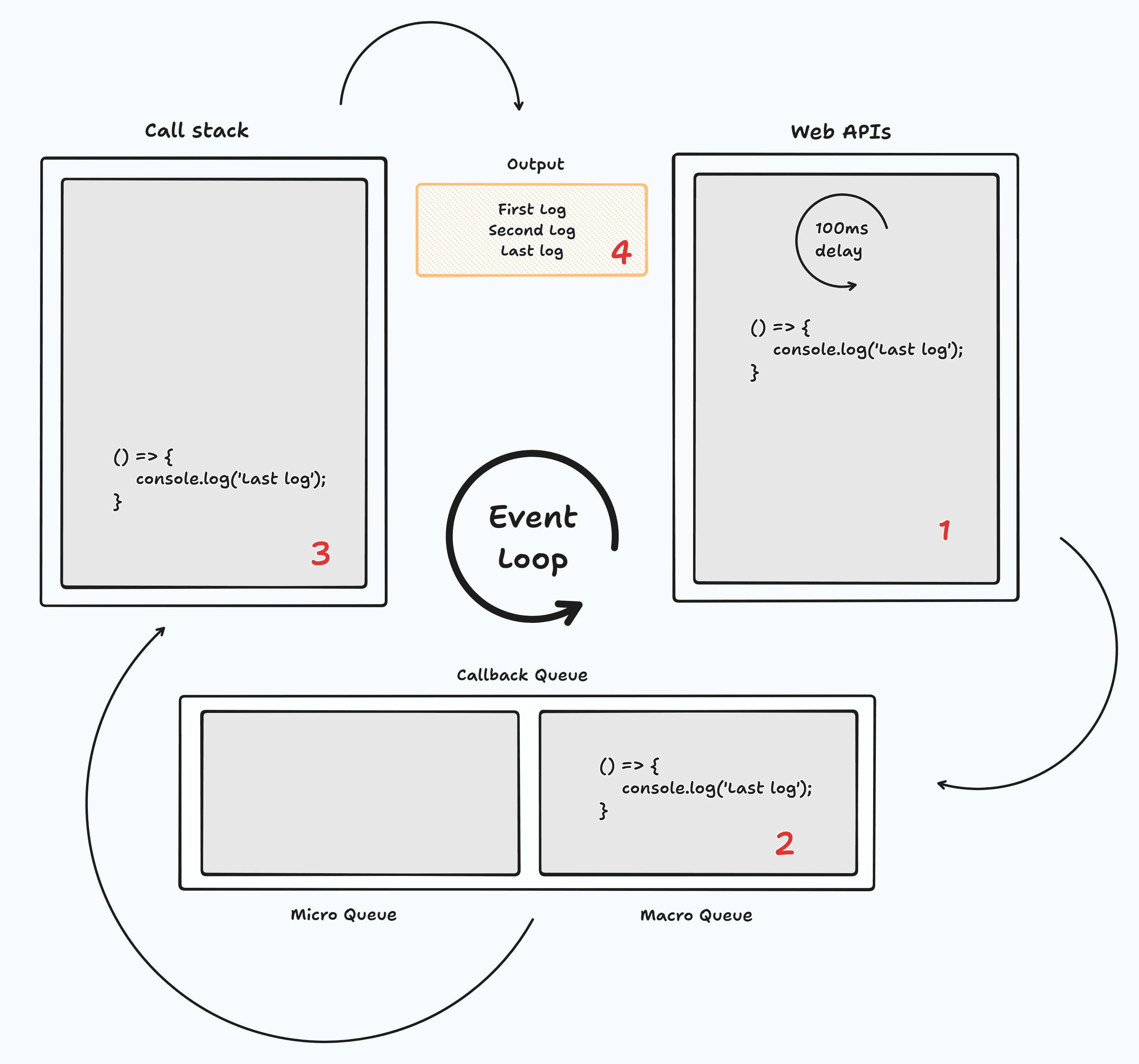Understanding event loop in JavaScript
Javascript is a single-threaded, non-blocking, and asynchronous programming language that can run natively in a browser.
Single-Threaded
means the language can execute only one instruction at a time. this distinguishes it from multi-threaded programming languages that execute multiple instructions at once.

Non-Blocking and Asynchronous
mean the language does not block the execution of the next operation. In other words, the program does not wait for a specific previous operation to finish executing before it moves to the next one.
It leverages mechanisms like callbacks, promises, and async/await to manage asynchronous tasks.
The event loop plays a role in overseeing the execution flow, ensuring that the single-threaded JavaScript can efficiently handle multiple tasks concurrently
Event Loop
The event loop is responsible for pulling stuff out of the queue and placing it onto the call stack (function execution stack) making sure that instructions don't block the execution of other code
Web APIs
Web APIs are built within the web browser providing JavaScript the ability to Manipulate documents, fetch data from the server and more.
Callback Queue
Callback queue is a data structure where elements are stored in the FIFO (First In First Out) principle means the first element inserted would be the first element to be accessed
Call Stack
A Call Stack is a mechanism for a JavaScript interpreter to keep track of function calls in a program (what function is currently being run and what functions are called from within that function)

whenever a function gets invoked it gets added to Call Stack, since it's called a stack that means first in, last out. the function gets popped off the stack when it returns a value
let's try to figure out what gets logged to the console:
let's take a look at the execution order of the previous code:
- We invoked
console.log('First log')which will get added directly to the call stack - The callback we passed to
setTimeoutgets added to the Web APIs - The timer runs, in the meanwhile the other
console.logwill be added to the call stack

First logandSecond logget logged and once the timer finishes running it moves the callback to the macrotask queue then event loop will add that callback to the call stack once it gets empty.

You may notice that callback queues consist of two queues microtask & macrotask
The event loop always gives higher priority to the microtask queue
Let's take this example, what do you think the order of the logs is?
Following the previous concepts:
console.log('First')andconsole.log('Fourth')get added to the call stack, which logsFirstandFourth- Both
PromiseandsetTimeoutwill be already added to the task queue and since the microtask queue has higher priority over the macrotask,Thirdgets logged - Finally, the setTimeout callback gets invoked, which therefore logs
Second
Quick Recap
-
JavaScript Runtime Model
- Single-threaded execution
- Non-blocking operations
- Asynchronous capabilities
- Event-driven architecture
-
Event Loop Components
- Call Stack: Function execution context
- Web APIs: Browser-provided capabilities
- Callback Queue: Task management
- Microtask & Macrotask queues
-
Execution Order
- Synchronous code runs first
- Microtasks have higher priority
- Macrotasks run after microtasks
- Event loop maintains order
References
Let's work together
I build exceptional and accessible digital experiences for the web
WRITE AN EMAILor reach out directly at hello@mohammadshehadeh.com

